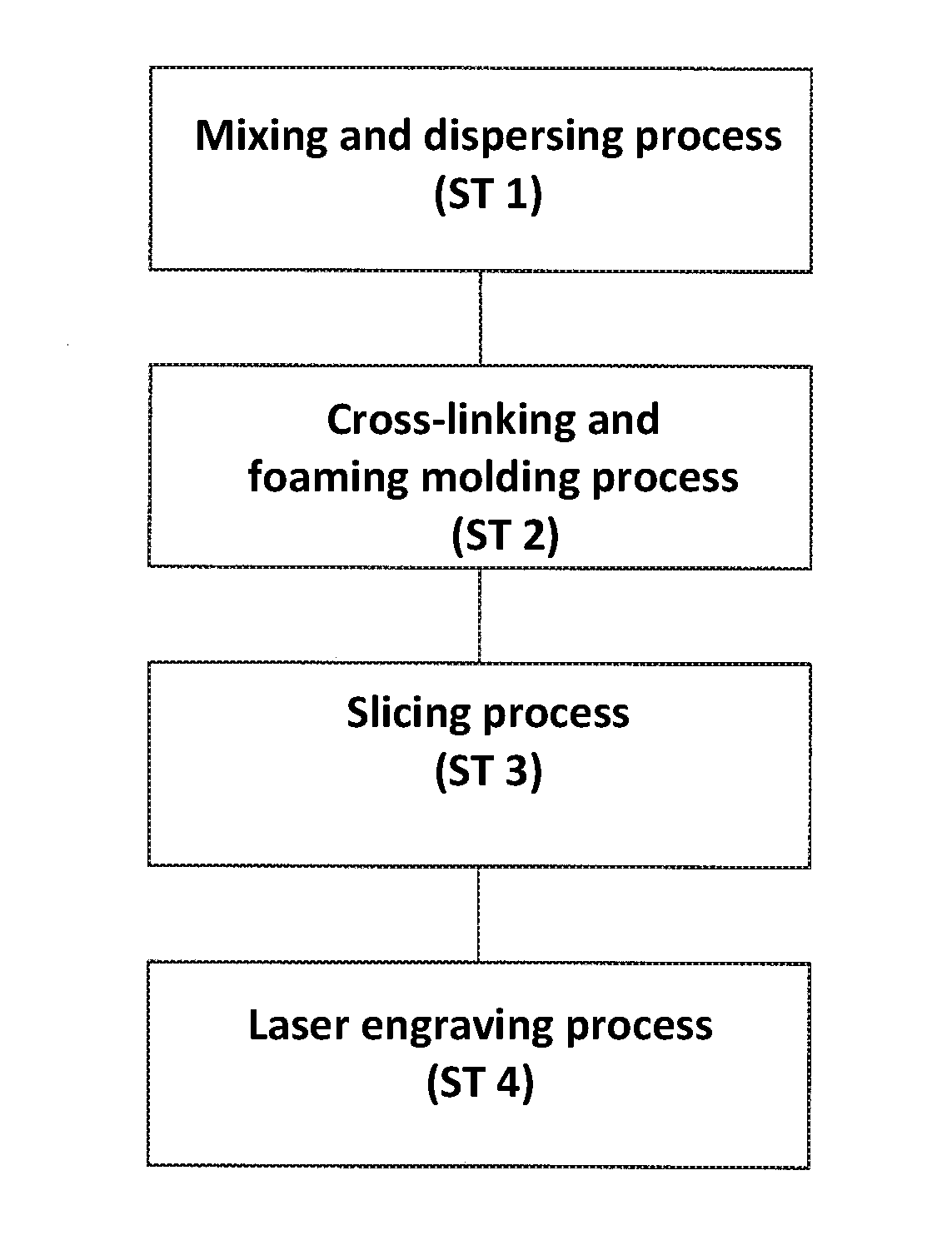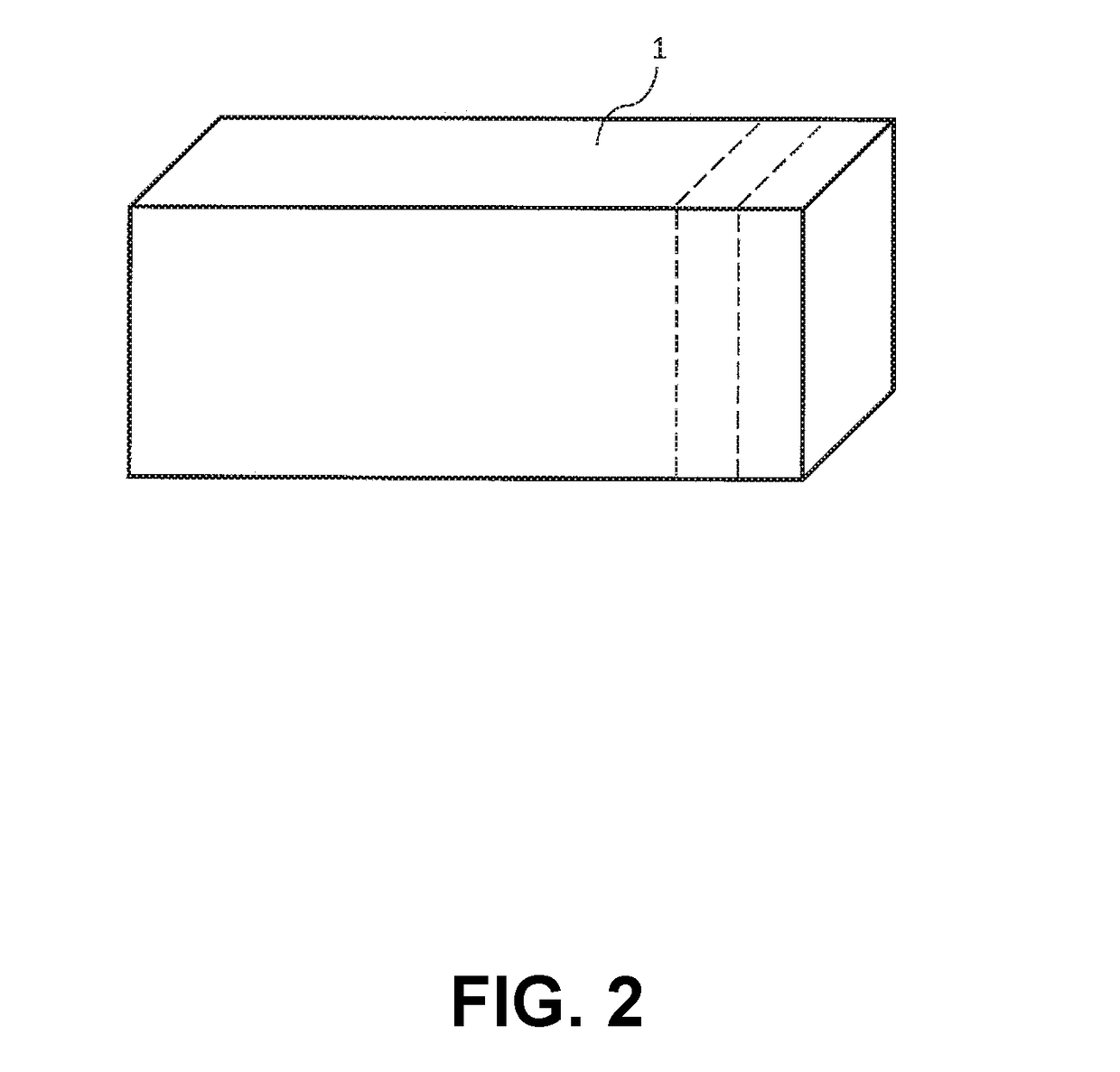Method of producing synthetic resin stamp
a synthetic resin and stamp technology, applied in the field of synthetic resin stamp production, can solve the problems of burning residue of rubber raw materials that tend to stick to the seal face, strong odor tends to generate, etc., and achieve the effect of preventing strong odor, easy removal of burnt residue, and improving cleaning step
- Summary
- Abstract
- Description
- Claims
- Application Information
AI Technical Summary
Benefits of technology
Problems solved by technology
Method used
Image
Examples
example no.1
EXAMPLE NO. 1
[0046]An example No. 1 of the embodiment of the present invention will be explained next. In the example No. 1, 70 parts of the thermoplastic elastomer, 30 parts of an ultra low-density polyethylene, 70 parts of the filling material (talc), 4 parts of the cross-linking agent, and 4 parts of the foaming agent are uniformly mixed to obtain a uniform mixture. Then, the uniform mixture is processed and kneaded with a twin screw extruder to obtain the molding material (the example No. 1).
example no.2
EXAMPLE NO. 2
[0047]An example No. 2 of the embodiment of the present invention will be explained next. In the example No. 2, 30 parts of the thermoplastic elastomer, 70 parts of an ultra low-density polyethylene, 70 parts of the filling material (talc), 4 parts of the cross-linking agent, and 4 parts of the foaming agent are uniformly mixed to obtain a uniform mixture. Then, similar to the example No. 1, the uniform mixture is processed and kneaded with the twin screw extruder to obtain the molding material (the example No. 2).
example no.3
EXAMPLE NO. 3
[0048]An example No. 3 of the embodiment of the present invention will be explained next. In the example No. 3, 50 parts of ethylene vinyl acetate co-polymer (a vinyl acetate content is 20%), 70 parts of an ultra low-density polyethylene, 70 parts of the filling material (talc), 4 parts of the cross-linking agent, and 4 parts of the foaming agent are uniformly mixed to obtain a uniform mixture. Then, similar to the example No. 1, the uniform mixture is processed and kneaded with the twin screw extruder to obtain the molding material (the example No. 3).
[0049]An experiment was conducted to evaluate the example No. 1 to the example No. 3 obtained through the process described above.
[0050]In the experiment, 340 g of the molding materials of the examples No. 1 to No. 3 were placed in a metal frame having a thickness of 7.5 mm and an inner volume of 274 cm3. Then, the metal frame was heated at 190° C. for five minutes, so that the molding materials of the examples No. 1 to N...
PUM
| Property | Measurement | Unit |
|---|---|---|
| decomposition temperature | aaaaa | aaaaa |
| cross-linking temperature | aaaaa | aaaaa |
| cross-linking temperature | aaaaa | aaaaa |
Abstract
Description
Claims
Application Information
 Login to View More
Login to View More - R&D
- Intellectual Property
- Life Sciences
- Materials
- Tech Scout
- Unparalleled Data Quality
- Higher Quality Content
- 60% Fewer Hallucinations
Browse by: Latest US Patents, China's latest patents, Technical Efficacy Thesaurus, Application Domain, Technology Topic, Popular Technical Reports.
© 2025 PatSnap. All rights reserved.Legal|Privacy policy|Modern Slavery Act Transparency Statement|Sitemap|About US| Contact US: help@patsnap.com



